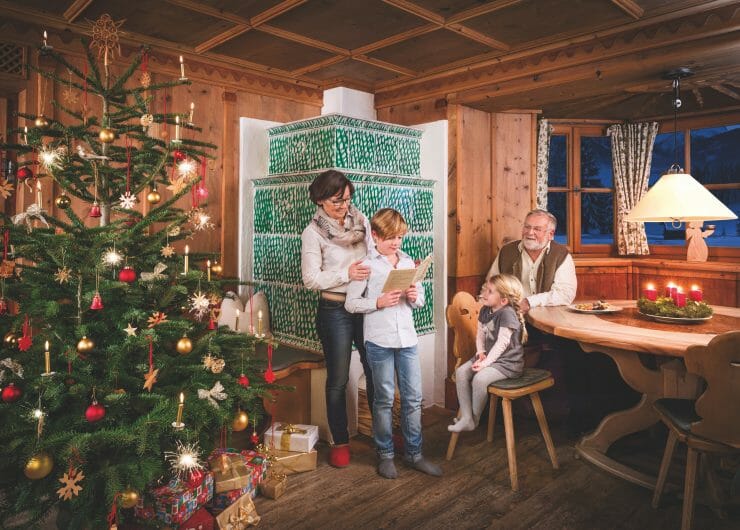
When we were children, the singing of “Silent Night” took place under the Christmas tree prior to opening the presents. The song was an essential part of the festivity, which has remained so to this day. It’s a beautiful song whose simple purpose is to bring joy. Even if the interpretation may sometimes leave much to be desired. I, for example, still cannot get my father’s loud and rough baritone out of my ear. But that’s alright because the music can take it. Later, in Salzburg, it was an original, four-part version with a string trio, two horns and an organ that fascinated me the most. It was created by the composer, Franz Xaver Gruber, who, as a church musician in Hallein, still got to see the global success of his stroke of genius. And thus, the song becomes a fine, little cantata.
As so often in life, the creation of the song was a lucky coincidence, or rather an accident. The church organ in Oberndorf, which had just been separated from the parent municipality of Laufen, had become unplayable. Thus, the priest and the organist improvised a Christmas song for the mass. Joseph Mohr, the song’s composer, came from Salzburg and was a socially engaged clergyman from modest circumstances. He was very good at playing the guitar and had a beautiful tenor voice. Mohr was the son of a linen weaver from Upper Austria and worked as a teacher and choirmaster in Salzburg. At that time, his profession would have been referred to as “Regenschori”, an old way of saying “choirmaster” in the Catholic churches of Austria and Bavaria.
Mohr had already written the lyrics in 1816 in Mariapfarr in the Lungau region. The melody came to be thanks to the broken organ and the suggestion of the priest. What resounded for the first time on Christmas Eve in 1818, performed by Mohr and Gruber, accompanied by the guitar, became one of the most successful songs in the history of music. The man who ended up repairing the organ brought the song into the Zillertal valley in Tirol, which still belongs to the Archdiocese of Salzburg today. There, in Fügen, the song was allegedly performed by Christmas of 1819 already. Various folk singers from the Zillertal valley made the song famous, first in the Old, and later even in the New World. In many versions. Gruber himself wrote several different versions. But what matters is the song’s substance.
It’s a simple lullaby in a siciliana rhythm, which is said to express tenderness and a beautiful sense of melancholy. In Baroque and Classical music, it was often used for pastoral scenes, not just in spiritual but also in worldly cases. Pamina in Mozart’s “Magic Flute”, for example, sings her mesmerising aria, which is likely mourning her lost love, in this rhythm. Joseph Haydn, on the other hand, used it to praise the spring in his oratorio “The Creation”. Gruber was likely aware of spiritual siciliana movements from his daily work in the churches of Arnsdorf and Oberndorf, perhaps even some by J.S. Bach, the Haydn brothers or Mozart. There are plenty of potential role models, but the unity between the lyrics and music originates from Mohr and Gruber.
The song is written in German, the language can be described as folksy, the rhythm is based on the bagpipes of Sicilian herdsmen. The lyrics can be translated quite well. Even members of different religions or atheists cannot escape the magic of the moving composition. This is because the song expresses the power of the Christmas story in simple words and motifs and because the music does not sound triumphant but rather touching. Some people are moved to tears by the song, which may be due to its melancholic rhythm — even Pamina sings while crying, so to say. Others are rather moved to a happy smile by it. You may even end up laughing with tears in your eyes. The song is neither liturgical nor stern, it is a love song to a newly born child. It is a song of peace, filled with spirituality, which crosses barriers. And it is timeless. It belongs to all of those in the world who have good intentions.
(Thoughts by professor Gottfried Kasparek)

